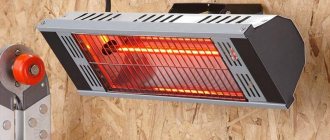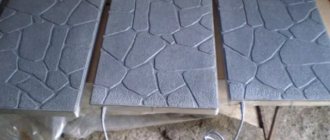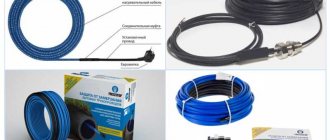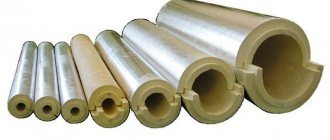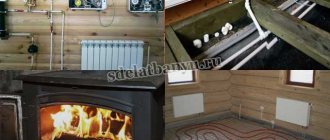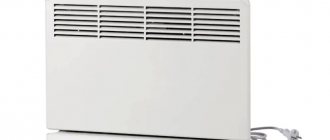Good day! Let's discuss - convector or oil heater - which is better.
In the house of one of my distant relatives (living outside Russia) last year, just before the season, the central heating was cut off. It happened unexpectedly - housing and communal services employees simply came to his house with an oil heater and offered to survive the winter like this. Is it a good joke to heat 60 square meters of space with one fireplace? Naturally, he no longer had time to design and install a gas system. I decided to endure it and buy something electric. If you suddenly face a similar choice, read this article.
Operating principle of oil heaters
I have already described how convectors operate in previous materials. An oil radiator works on the principle of any electric fireplace: fuel (in this case, oil), when heated, transfers heat to the metal body, and it, in turn, to the environment. That is, the device first heats itself, and only then the room.
Outwardly, such a device resembles a classic battery with sections - the more of them, the hotter the room will be.
What else you need to know about the oil heater:
- The unit was created 20 years earlier than convectors.
- Programmed to maintain optimal temperature in an apartment or office.
- A ceramic or, less commonly, metal heating element is used as a heating element.
Modern models are equipped with additional functions such as a timer and fall protection.
Installation location
*
IR heaters are divided according to the installation location into the following types:
- ceiling;
- wall;
- floor;
- mobile.
The first three types of heaters are stationary. They do not take up free space and are distinguished by solid power and high efficiency. At the same time, mobile heating devices can be easily removed when not needed. In addition, they are significantly smaller in size than their stationary counterparts.
The most common IR heaters are ceiling-mounted. The heat-emitting element in them can be made of aluminum, glass, metal plates, anodized aluminum.
Attention: The most advanced and high-quality models are made of glass, as they are not capable of burning out.
But they also have a significant disadvantage - high cost. Products with an anodized aluminum plate are also in great demand. Among their advantages are strength, light weight and long service life.
Wall-mounted IR heaters are recommended to be installed under windows. This placement allows you to achieve high-quality and quick heating of the room.
We're racing against each other
Most consumers are prejudiced against heating devices powered from the network. This is understandable - the price of electricity in the Russian Federation is constantly growing. That’s why the speed of heating the room and the option to maintain heat are so important. Then there will be a chance to save on electricity.
Convector heaters begin to heat up almost immediately – after 5-7 minutes. And models with a built-in fan - instantly. This is due to the fact that the unit has no parts that need to be heated - it gives off heat as soon as the air in the room begins to circulate.
Oil radiators are inferior in speed. Some models, at an outside temperature of -10°C, only heat themselves for the first half hour. More modern ones require 15-20 minutes. But it’s still not fast compared to convectors. But keep in mind one nuance - the slower the oil heater heats up, the slower it cools down, continuing to release heat into the atmosphere.
Still, many consumers prefer to deal with convectors.
About convectors in detail
The operating principle of a convector is completely different: cold air, passing through a heated spiral from bottom to top, is warmed up and, accordingly, heats the room.
It is very simple to determine whether you have a radiator or a convector in front of you: the convector has a kind of grille on top through which warm air comes out. For such a heater to completely warm up the room, it takes more than half an hour, however, due to better energy efficiency, it is quite suitable for country houses, cottages and other places where electricity is expensive. Also, a convector will be very useful if you own a large city apartment, a house with panoramic glazing or, for example, a winter garden.
In addition, since the convector does not need a large container for oil, it takes up much less space , and therefore is much more loved by designers, since it can be built into any suitable niche.
Advantages
Energy efficient Takes up little space Safe for children and animals
Flaws
Long-term heating of the room Possible noise Possibility of foreign odors
Heating area
How often do I hear from clients the question: “Is one device enough for me?” I immediately ask in response: “Do you want to save money or keep warm?” If the first option, one fireplace is quite enough.
Both oil and convector heaters are capable of heating a room of approximately the same size. But it would be a mistake to assume that one fireplace = one room. Firstly, a lot depends on the power of the device. Secondly, it’s better to navigate by footage. For example, you have a 1 kW device. It is enough to heat 10-12 sq.m. So better plan your purchases, taking into account the features of your own home.
Summary
It is important to choose a heater taking into account its operating conditions. Each radiator has its own advantages. Oil batteries, on average, are cheaper, last about 10 years, and quickly warm up small rooms. Buying a convector is a more expensive undertaking, but it consumes more energy, is simple to install and convenient to use due to the ability to accurately regulate the temperature.
Consider additional factors when choosing. For example, if children and pets can tip the heater over, they can get burned on the surface of the oil radiator.
Therefore, it is better to choose a convector. However, a convection radiator is not suitable for people with dust allergies because it additionally saturates the air with dust. Then it is rational to opt for an oil convector, especially if you do not plan to move the device.
One of the key selection criteria is power. The optimal power of the heating device is calculated based on the area of the room, ceiling height and number of windows. For example, to heat rooms up to 21 square meters, you need a radiator with a power of at least 1.5 kW. However, if the ceilings in the room are higher than 3 meters, you need an even more powerful model, otherwise the room will not warm up completely.
Dimensions and appearance
When purchasing a heater for a country house, few people care about the compactness of the device - as long as it copes with the task assigned to it. Residents of small apartments are forced to take into account the size of fireplaces so as not to steal functional space from their home.
In terms of compactness and ease of placement, wall convectors win - they are flat and lightweight. Floor-standing ones won’t take up much space either. Oil radiators are more bulky and cannot be attached to the wall. In addition, not everyone likes the mass of such devices - when a heater weighs 20 kg, difficulties arise when moving from room to room, even with wheels.
As for the design, here I also give sympathies to convectors. They are laconic, discreet and fit into any interior. Moreover, wall-mounted models can be hidden behind mesh decorative grille panels.
Oil fireplaces are not distinguished by grace and beauty. Most of them look like a standard Soviet heater. But if you need to heat an average room, keeping it warm, and appearance is not important to you, then a radiator will be the best choice.
Design
An infrared heater consists of a heating element, a quartz tube, a heat-emitting plate and an open spiral. When choosing this heater, you should pay attention to the following elements of its design:
- frame;
- foil;
- plate;
- insulator;
- heating element.
Much for high-quality heating depends on the plate. There should be no streaks on it. If they are present, then the rays emitted by the heater negatively affect the material from which it is made.
The plate must have an anodized layer with a thickness of at least 15 micron. If it is absent or less thick, the plate will quickly become unusable due to high temperature.
Much also depends on the material from which the body of the IR heater is made. It is best if it is made of aluminum or stainless steel. The heating element of the IR heater must be equipped with protection from exposure to moisture.
Fire protection
When buying an electrical appliance, you should definitely find out which is safer – a convector or a radiator. In principle, both types of heating devices are designed with fire protection, and some models automatically turn off if accidentally dropped. There is even a “child lock” option, but only on advanced electronically controlled convector fireplaces.
Do not discount such a parameter as the condition of the wiring. Often, fires happen precisely because of old contacts, and not because the device is malfunctioning. I strongly recommend that anyone planning to switch to a convector heating system install an additional line - these devices greatly increase the voltage. For an oil fireplace, a regular outlet is sufficient.
Also keep in mind that dust often gets on the heating element of the convector - this can be heard from the burnt smell when the device is turned on. Now imagine that this is not dust, but some larger garbage, for example, scraps of paper carefully placed behind bars by a restless child. Guess how many times the fire threat will increase? With an oil radiator, such a danger does not arise, since the heating element is hidden under the body and no foreign object can get there. Reading reviews, I learned that you can even dry things on such a device and nothing will happen to it. Whereas you cannot hang anything on the convector.
On the other hand, oil devices heat objects nearby. For example, if the fireplace is located close to a table or cabinet, there is a risk of deformation of the surface of the latter. In addition, the housing becomes very hot during operation, which can lead to burns. This will not happen with a convector - it does not heat the surface, and it itself remains practically cold.
Conclusion: the default fire safety of these devices is the same, but if used carelessly there may be a risk of fire or burns.
The main differences between heating devices
Each outlet selling heating equipment offers a huge selection of models.
Floor heating convectors
They are classified (or distinguished) by a number of properties:
- power (thermal output, how quickly the room heats up);
- connection method (connection points to pipes for coolant inlet and outflow);
- type of assembly, solid or with the possibility of increasing length;
- body manufacturing metal (cast iron, steel, bimetal, aluminum or copper);
- safety of operation (low-quality products often burst when testing the system);
- maximum load (maximum pressure);
- equipment dimensions (length, height and depth);
- design (appearance, style);
- installation method (built-in, floor and wall, vertical and horizontal);
- type of energy resource (heating from a boiler or from the mains);
- the intended coolant (water and steam, antifreeze and oil) with its characteristic pH (acidity) level;
- economic benefit (cost and efficiency).
There is also a difference in mobility: a heating element, powered by an electrical outlet, warms up the oil inside the container - this is a mobile oil heater. But it can only serve as an additional source of heat.
Floor convector
Water and electric convectors also heat the air using the battery principle; the circulation of air masses around them occurs naturally or forcedly - through a built-in fan.
Saving is everything
Well, not everything, of course, but this is a very important parameter. Agree, any consumer of two devices will choose the energy-saving one if both heat equally.
So what is more economical - oil or convection? Oil-based devices take longer to gain momentum to release heat. As soon as the unit warms up, it already “eats” approximately 500 W (depending on the power of the model). It turns out that you are paying extra money for emptiness. Although, if you close the room and turn off the thoroughly hot device, it will maintain heat for about half an hour.
But isn’t it easier to take a convector that will start heating immediately, reducing electricity consumption by 25%? Please note that this is only relevant in the case of conventional models - if there is a fan near the fireplace, the savings disappear.
Conclusion: convectors are faster and therefore use energy more sparingly. But only in the absence of additional functions.
Safety first
The types of devices being compared are classified as high-risk heating devices. The devices are equipped with built-in overheating protection. When the maximum temperature is reached, the device automatically turns off.
Electrical devices have an increased risk of electric shock. To prevent injury, it is necessary to strictly comply with fire and electrical safety requirements.
Some models are used in rooms with high humidity. To protect against damage, the devices have a high degree of sealing.
Your personal comfort and environmental friendliness
Since any heaters dry out the air, for an apartment with a small area it is better to choose the most gentle option. If you have allergies, do not lock yourself in a room with a convection fireplace running at full blast. Since air constantly circulates during the heating process, this prevents dust from settling. Consequently, it floats in the environment, and you will constantly inhale it.
Oil radiators do not circulate air, but can cause drafts due to uneven heating. For asthmatics or people prone to frequent colds, it is better not to use such a device.
To reduce the side effect of convection, use humidifiers or air ionizers, regularly do wet cleaning and ventilate the room. Sealed windows and tightly closed doors will help cope with drafts.
Wave Ranges
When choosing an infrared heater, you should pay attention to the length of the waves it emits during operation, which can be long, medium and short.
The most modern are long-wave heaters. When they operate, the heating element heats up to a temperature of no more than 250-350 degrees. This allows them to be fireproof and not dry out the air during operation.
*
Their heating element is made of an aluminum plate into which a low-temperature heating element is built. Most often, these models of climate control equipment are used for heating residential and industrial premises and offices.
Short-wave infrared heaters are most often used in workshops or outdoors. This is due to the fact that the waves they emit can negatively affect human health if he is regularly exposed to them. Because of this, it is not recommended to place them in residential premises or in crowded places.
Medium wave IR heaters are the most common. They are actively used for heating apartments, private and country houses, and offices. The varieties of these heaters according to the type of heating element are as follows:
- quartz;
- carbon;
- halogen;
- tubular;
- ceramic.
The best ones are carbon and tubular. With their help, you can quickly and efficiently heat the desired area of the room. Halogen ones should not be installed in residential areas, as they negatively affect well-being, and ceramic ones have a short service life.

